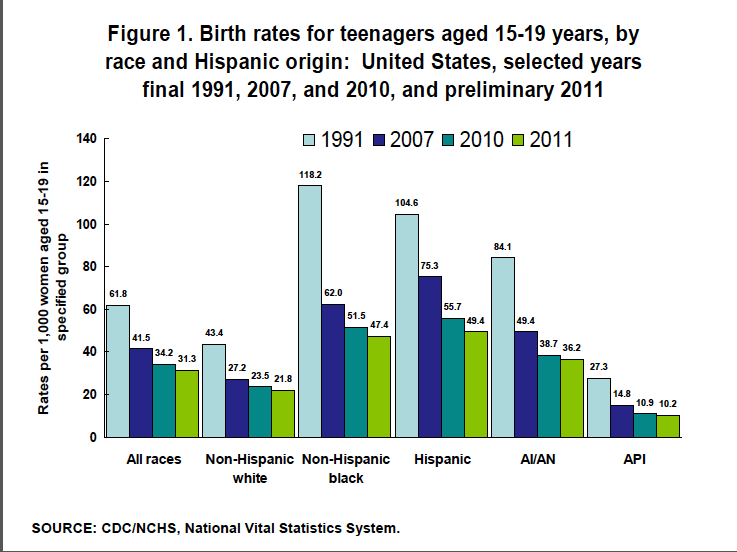Alarmist Approaches to Teen Pregnancy Trumping Efforts to Help Teen Parents Succeed
The latest CDC data about teen pregnancy rates on the decline gets much attention while the conditions that could be improved to help all parents succeed are ignored.
Last week the latest news about teen pregnancy statistics made quiet headlines: “Teen Pregnancy Rate Drops to Lowest Ever Recorded, CDC Says.” If the rates had increased we would have likely heard more about the news, but the CDC data did in fact confirm that teen pregnancy rates have continued their steady decline across all demographic groups in the United States.

Unfortunately touting these statistics tells only one part of the story. Missing are the statistics that might actually tell us more about how teen parents are doing. I’ve written before about how the focus on teen pregnancy prevention leaves parenting teens in the dark. In addition to feeling the adverse effects of stigma-based prevention programs, many of the resources and much of the funding goes to prevent future teen pregnancies, rather than figuring out how to help current teen parents succeed.
The dropping teen pregnancy rates don’t tell us whether teen parents are surpassing the various hurdles placed in their path to staying out of poverty, getting an education, avoiding health problems. It’s worth pointing out that many of the statistics correlating teen pregnancy and poverty could be blamed on the fact that many of the teens who get pregnant are already at a higher risk for poverty and the other outcomes we see. For example, a recent study linked lower levels of pre-teen literacy with higher likelihood of becoming a teen parent. So when we hear about high school drop out rates and teen parents, there may have already been factors pre-pregnancy that increased the likelihood of not finishing high school (like lower literacy levels).
Some of the teens who get pregnant may have ended up living in poverty anyway, whether they had gotten pregnant or not. That means that resources put toward the social safety net, toward reducing poverty and improving education for all people could also improve the lives of teen parents.
We should be focusing on allocating resources to support all parents—including teens—to ensure the best possible outcomes for their kids. Unfortunately these efforts don’t get the kind of attention (or funding) that teen pregnancy rates and prevention efforts do. There is nothing inherently wrong with having a child at a young age—the problem is the barriers erected by our society and economy that make parenting young more difficult.
The new CDC data also shows that those between the ages of 20 to 29 are also waiting longer to become parents, so it seems that there is a decline in births in all age groups, and the average age of pregnancy continues to creep up. This is likely indicative of better access to contraception as well as an economy that rewards early career building and makes entering the workforce post-parenting more challenging.
The crusade against teen pregnancy and parenting should be replaced with programs that support all parents, and make sure that our safety net doesn’t keep anyone in poverty, regardless of age or family size. Unfortunately it’s hard to counter these “teen parents are the boogeyman” narratives. They are everywhere, and very rarely questioned. Even an article in CBS news reporting on the declining rates included this quote from pop doctor Drew Pinsky:
“”We are in a woeful shape,” television’s Dr. Drew Pinsky told HealthPop in a previous article about teen pregnancy. “The strange thing about the entirety of the sexual revolution is that no one even thought this sexual revolution thing hoisted by adults was raining down on teenagers and young adults. It’s had dire, dire consequences.””
That’s alarmism at it’s best. In actuality, poverty, racism, and stigma toward teen parents has had dire, dire consequences. Alarmism about age and pregnancy may be common, but support for real solutions to help parents succeed is harder to come by.
